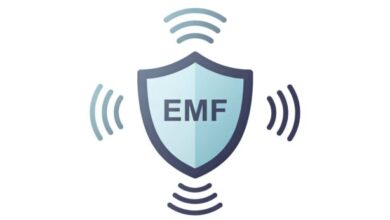
Introduction
In an era where the digitization of assets is a norm, network security emerges as the unsung hero guarding our invaluable digital treasures. It is not just about protecting against known threats but anticipating new ones, securing emerging technologies, and safeguarding the burgeoning realms of digital data. By carefully integrating various types of security services in network security, individuals and enterprises can stride confidently into the digital future. From very basic to remarkably complex protective measures, network security is the multifaceted shield of the 21st century, constantly evolving to guard the world’s digital assets better.
Defining Network Security in the Digital Age
As we plunge deeper into the digital age, network security has become synonymous with a protective barrier against a legion of cyber hazards. It involves deploying hardware devices, software solutions, and well-curated protocols and policies to guard against potential intrusions. The goal remains to protect and preserve the sanctity of data as it traverses the intricate web of networks that sustain modern life. Whether personal data on a smartphone or proprietary information in a corporate server, network security encompasses the strategies that prevent unauthorized incursions and preserve the integrity of our digital interactions.
Layers of Defense: Understanding Network Security Protocols
Effective network security is predicated upon a thoughtfully-architected multi-layer defense strategy. This defensive stance includes meticulous configurations of firewalls to create a barrier against external threats, the deployment of antimalware systems to thwart various forms of malicious software, and the use of intrusion detection and prevention systems to monitor and neutralize cyber threats. Next, Transport Layer Security (TLS) protocols dictate the safe exchange of information across the internet, ensuring data integrity and confidentiality during transit. Meanwhile, innovative network security solutions are programmed to adapt and evolve, learning from new threats and thus continuously enhancing protective measures.
Identifying and Preventing Cyber Threats
To effectively shield digital assets from cyber threats, one must identify these dangers and understand the methodologies behind these sophisticated attacks. To compromise network security, adversaries employ many tactics, including sophisticated malware, zero-day exploits, and social engineering techniques. In modern cybersecurity, monitoring tools and algorithms are pivotal in identifying unusual patterns that may indicate a breach. At the same time, proactive planning and the implementation of up-to-date protective measures help preempt cyber attacks. Adding to this, incident response protocols and disaster recovery plans are critical contingencies that maintain business continuity and data integrity in the event of a successful breach.
The Human Element: Education and Best Practices in Network Security
Effective network security goes beyond technical safeguards; it encompasses a culture of vigilance and continuous education. Human error, whether in the form of weak password practices or the unintentional download of malware, can unravel even the most robust security infrastructures. It underscores the importance of extensive employee training in cybersecurity protocols and awareness of social engineering tactics, such as phishing and spear-phishing campaigns. Developing best practices, ranging from regular password changes to avoiding public Wi-Fi for sensitive transactions, also plays a crucial role in strengthening the human firewall against potential security breaches.
Legal and Regulatory Aspects of Network Security
An expanding global framework of data protection laws and industry-specific regulations further underscores the relevance of network security. As these legal considerations become increasingly stringent, they compound organizations’ complexity in crafting a compliant and robust security posture. Ensuring technical defenses and compliance with regulations such as the General Data Protection Regulation (GDPR) or the Health Insurance Portability and Accountability Act (HIPAA) has become a business imperative. These legal frameworks compel organizations to conform to high standards of protection for personal and customer data, thereby indirectly elevating the overall security of the digital ecosystem.
Technological Advances in Network Security Solutions
The technology landscape never stands still, and neither does the domain of network security solutions. Emerging trends, such as utilizing artificial intelligence (AI) and machine learning (ML) technologies, signify a paradigm shift in cybersecurity. These technologies empower security systems to learn from data, identify patterns, and make autonomous decisions to thwart cyberattacks more efficiently. Automation technologies streamline preventive measure activation and enable real-time threat response, leading to an overall increase in the resilience of network infrastructures.
What to Look for in a Network Security Provider
When selecting a network security provider, due diligence is paramount. This selection process involves assessing potential providers on various dimensions, including the breadth and sophistication of their security offerings, reputation within the industry, and responsiveness to emerging cyber threats. Businesses should prioritize providers with proven experience in mitigating risks similar to those they face. As industry experts elaborate, examining the provider’s certifications and a verifiable history of innovation in the security domain becomes critical.
Overcoming Challenges in Implementing Network Security Measures
The journey toward effective network security implementations is often fraught with challenges. Adapting to the swiftly evolving landscape of cyber threats can be daunting, as can managing complex network security systems. Moreover, the challenge of securing increasingly dispersed digital assets, both on-premises and in cloud environments, further complicates network security endeavors. Successful navigation of these compounding challenges is achieved by cultivating an organizational mindset geared towards continuous learning and flexibility and engaging in partnerships that offer expertise and agility in security solutions.
Conclusion: The Continuous Journey of Network Security Enhancement
Through this exploration of network security, one conclusion stands prominently: the quest for digital asset protection is relentless and unending. As new technologies emerge and cyber adversaries refine their tactics, a proactive stance in embracing the evolution of security methods is essential. Staying informed and adopting a culture that values ongoing enhancement of network security measures is a commitment that will safeguard the present and forecast a more secure digital horizon. This commitment fortifies the foundations upon which businesses and individuals can thrive safely in a digital-first world.



